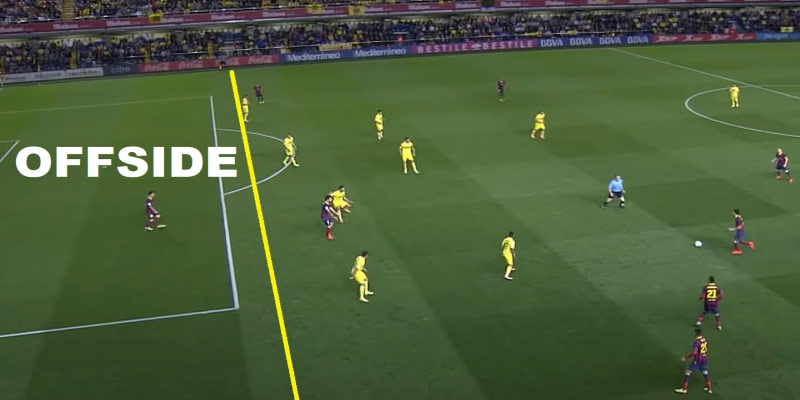The offside rule in football is more than just a technicality—it’s a game-changer. This seemingly simple rule can shift the momentum of a match, influence team tactics, and even determine whether a goal counts. Whether you’re a seasoned player or a passionate fan, understanding the offside rule can enhance your appreciation of the game. With its potential to spark debates and controversies, offside remains a key element that shapes football. Explore more about this crucial aspect of the game at https://i9bet4.net/, where football knowledge meets exciting betting opportunities.
The Offside Rule in Football
The offside rule stands as one of the cornerstones of football, demanding attention not just from players but also from officials, coaches, and fans. A profound comprehension of this rule can elevate the quality of play and lead to a deeper appreciation of the sport.
What is the Offside Rule?
To reiterate, the offside rule maintains that a player is in an offside position if they are closer to the opponent’s goal line than both the ball and the second-to-last opponent at the moment the ball is played to them. Although positioned ahead of the defense, players can only be penalized for offside if they become actively engaged in the play.
This simple definition conceals a myriad of complexities that arise in actual match scenarios. Assessing offside positions requires split-second judgments concerning player positioning and involvement, often leading to contentious debates among fans and analysts alike. The challenges posed by the rule contribute to its intrigue, enlivening discussions about strategy and execution.
Why is the Offside Rule So Important?
The significance of the offside rule extends beyond mere compliance with regulations; it fundamentally shapes the way football is played. By encouraging teams to think creatively, the rule compels coaches to devise innovative strategies focused on maximizing attacking potential while maintaining defensive solidity.
From a spectator’s viewpoint, the offside rule enhances the drama of the game. Close calls, nail-biting moments, and heated controversies surrounding offside decisions add an electrifying element to matches. Fans relish discussing whether a player was onside or offside, becoming deeply engaged in the game’s minutiae.
Moreover, the offside rule contributes to the evolution of football techniques. Teams continually adapt their styles, emphasizing the importance of timing, positioning, and predictive movements. As a result, the tactical landscape of the sport remains dynamic, reflecting the changing nature of play while maintaining its core principles.
Common Offside Mistakes Players Make
Even seasoned players can struggle with the intricacies of the offside rule. Recognizing and addressing common errors can empower athletes to refine their on-field performance.
One significant misstep occurs when players attempt to “play the referee” instead of focusing on their roles within the game. Some attackers may try to gauge their positioning based on the official’s stance, leading them to underestimate the primary responsibility of evaluating their place in relation to the last defender. This reliance can result in costly offside calls, disrupting team flow and morale.
Additionally, a failure to understand the nuances relating to “active play” can trap players in precarious situations. Many attackers overlook the distinction between simply being in an offside position versus actually influencing the play. This misunderstanding can lead to indecisiveness and hesitation when making runs, depriving them of opportunities to score.
Lastly, pressure situations can exacerbate offside mistakes. Players may panic during high-stakes moments, losing their composure and sacrificing their awareness for fleeting instincts. Training under simulated high-pressure conditions can mitigate this tendency, promoting calmness and confidence when executing plays.
Specific Offside Situations in a Match
Every football match presents unique contexts in which the offside rule comes into play. Familiarity with these various scenarios allows players to prepare effectively for diverse situations on the pitch.
Counter-attacks often serve as a breeding ground for offside violations, highlighting the necessity for players to make informed decisions quickly. As an example, consider a rapidly advancing attacker sprinting toward the opponent’s goal while a defender presses back. The attacker must remain acutely aware of the defender’s positioning and timing before launching their run. Properly gauging these factors can mean the difference between a clear path to the goal and being flagged for offside.
Free kicks and set pieces are also critical moments where the offside rule holds substantial weight. Players often employ deceptive tactics to confuse the opposing defense. Positioning oneself cleverly during a set piece can yield fruitful scoring chances, but it also heightens the risk of falling into the offside trap should miscommunication occur. Teams should strive to harmonize their efforts through meticulous planning and rehearsed strategies.
Goalkeepers, too, face unique considerations regarding the offside rule. While primarily tasked with stopping shots, they must also work in synergy with their defensive line to keep attackers onside. A well-executed offside trap can neutralize threats, yet miscalculations may allow attackers to exploit gaps—creating a high-pressure situation for goalkeepers. Coordinated communication among defenders and goalkeepers can effectively alleviate these concerns.


